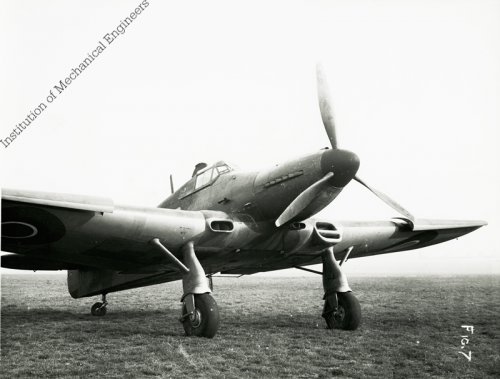- Joined
- 12 October 2009
- Messages
- 557
- Reaction score
- 213
Do we agree that once the terrible unreliability of the Sabre was overcome and the Typhoons structural weakness was sorted the combination of aircraft and engine made for an excellent low level tactical support vehicle; the low tbo gave logistics problems and slowed the build up of operational numbers. Also in chase mode it became an essential tool to counter the V1 missile (silly me! I assumed as it was Bee that it was Typhoon... it was of course later when he formed the first operational wing of Tempests.). Lack of serious supercharger marks meant that higher altitude duties were carried out by other more suitable aircraft but that enabled the Typhoon squadrons to hone their specialist skills at lower altitudes, to the benefit of invading forces as the allies moved back into Europe. Unfortunately for piston engines their days were numbered as a new technology rapidly developed to take their place. The jet era was about to take off.
What the RR, Bristol and Napier development streams tell us is how technical and political skills and networks of interested parties play a major part in determining the direction and rate of travel; forcing the pace of operational introduction can have huge consequences diverting resources to support operations whilst the teams mitigate the effects of insufficient development.
What the RR, Bristol and Napier development streams tell us is how technical and political skills and networks of interested parties play a major part in determining the direction and rate of travel; forcing the pace of operational introduction can have huge consequences diverting resources to support operations whilst the teams mitigate the effects of insufficient development.

